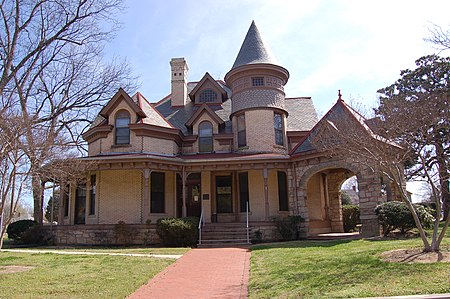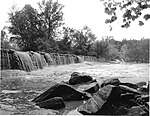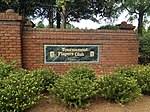Capehart House

The Capehart House is a Queen Anne style house built circa 1898 by Charles P. Snuggs for Lucy Catherine Capehart and her second husband, B. A. Capehart. Located on 424 North Blount Street in Raleigh, Wake County, North Carolina, it is one of the best examples of Queen Anne style architecture still standing in Raleigh. The Capehart House has an irregular skyline made of towers, turrets, dormers, and pediments, and luxurious facades ornamented with stained glass and decorative wooden designs.After Capehart's death, H. H. Crocker owned the home, which was used for apartments, until 1947. The state bought the house in 1971, and has been used as governmental office space since. In 1979, the house was moved from its former location at 403 North Wilmington Street to 424 North Blount Street. It was listed on the National Register of Historic Places in 1975.
Excerpt from the Wikipedia article Capehart House (License: CC BY-SA 3.0, Authors, Images).Capehart House
Spruce Grove Court, Raleigh
Geographical coordinates (GPS) Address Nearby Places Show on map
Geographical coordinates (GPS)
| Latitude | Longitude |
|---|---|
| N 35.941111111111 ° | E -78.5675 ° |
Address
Spruce Grove Court 2499
27614 Raleigh
North Carolina, United States
Open on Google Maps




